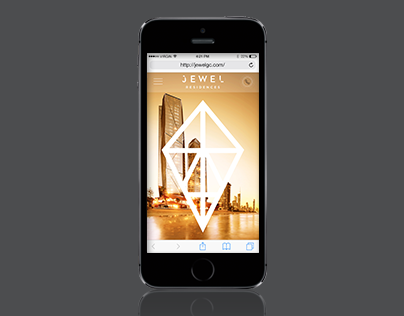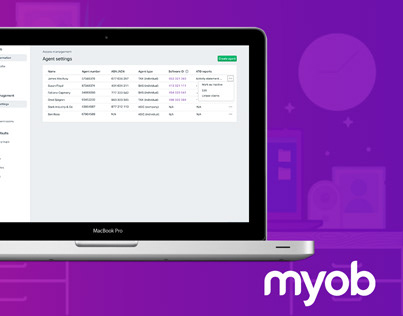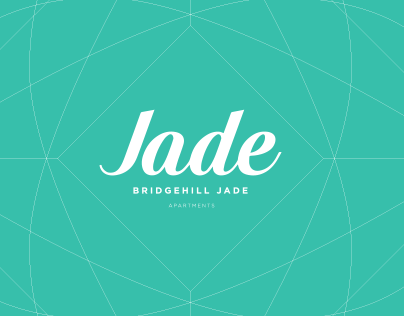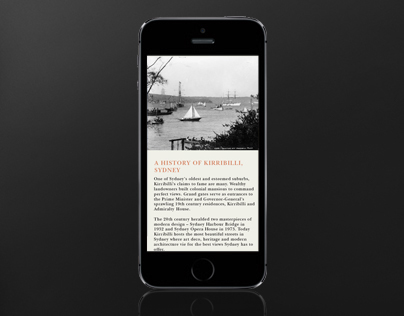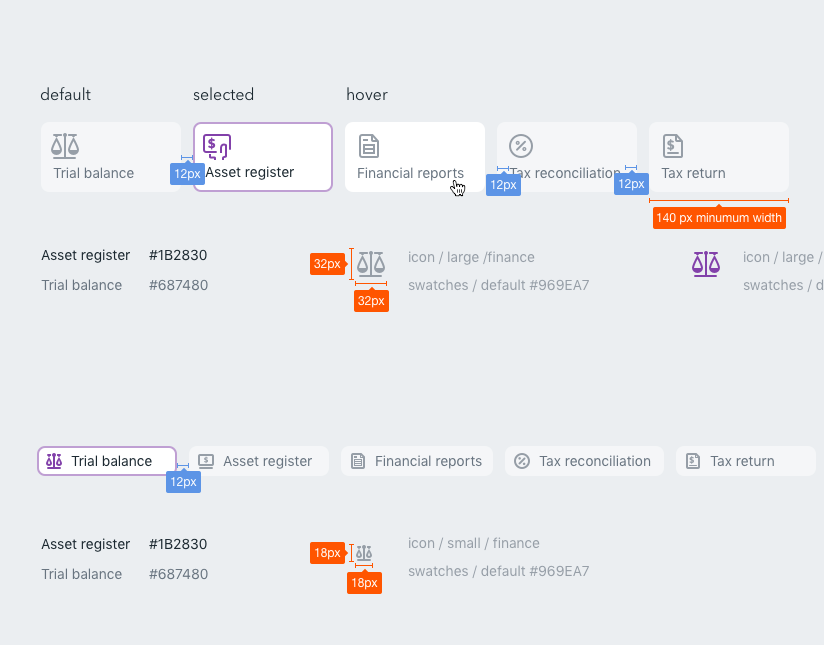The target audience
• New Zeeland SME’s (small & medium entreprise) – AccountRight & Essentials users
• New Zeeland Accountants – who prepare on behalf of their clients (SME’s)
• New Zeeland Accountants – who prepare on behalf of their clients (SME’s)
The project's objective
• To create an ‘end to end’ flow that allows users to map their accounts from their ledgers in order to file their AIM return or, for an accountant, to file on the behalf of their clients This solution is available in Essentials and ARL for the NZ market
The team
• Product manager: Andrea Ho
• Business analyst: Manisha Digar
• Dev lead: Anthony Sceresini
• Development crew: Quasar (5 team members)
• Business analyst: Manisha Digar
• Dev lead: Anthony Sceresini
• Development crew: Quasar (5 team members)
Project lean canvas
Responsibilities
• Liaising with the BA and PM in order to fully understand the scope of the project
• Creating the full set of interactive visuals covering the entire user journey (end to end flow)
• Creating interview guides and prototypes to be tested
• User testing all of these screens in order to validate the use cases
• Analysing the results of each user testing round and feeding back on the designs
• Involving and sharing the results of the user testing with the wider team but also the key stakeholders
• Documenting the design delivery for the dev team to consume
• Creating the full set of interactive visuals covering the entire user journey (end to end flow)
• Creating interview guides and prototypes to be tested
• User testing all of these screens in order to validate the use cases
• Analysing the results of each user testing round and feeding back on the designs
• Involving and sharing the results of the user testing with the wider team but also the key stakeholders
• Documenting the design delivery for the dev team to consume
The design process
1. Discover - Research & ideation
The CHallenges
• One of the challenges with this new change was the way in which we could automate pre-population of labels in the AIM Form. 80% of the data should have been able to be sourced from the general ledger. The challenge was to find the best way to perform the mapping/coding of data in order to flow through to the form.
• Most of the requirements were drip fed by the IRD, which made scoping this project rather challenging.
• Integrating this new product into an existing codebase that is relatively old.
• Most of the requirements were drip fed by the IRD, which made scoping this project rather challenging.
• Integrating this new product into an existing codebase that is relatively old.
Existing resources
• A current paper form that does the same thing as the AIM form; IR10 form
• The current provisional method already available in Essentials / ARL
• The current provisional method already available in Essentials / ARL
User personas
Meet Sheila & Jack
Sheila is a registered agent in her practice Jack is an SME, owns his own farm and does some of his accounting using Essentials
The AIM workflow is expected to be a mixture of Accountant and SME In some cases Sheila will prepare accounts, setup and file AIM and GST In other instances she is likely to assist Jack in setup and when comfortable Jack will be doing it himself Our system allows for both Sheila and Jack to work on the same workflow, so Jack can get help when he need
Sheila is a registered agent in her practice Jack is an SME, owns his own farm and does some of his accounting using Essentials
The AIM workflow is expected to be a mixture of Accountant and SME In some cases Sheila will prepare accounts, setup and file AIM and GST In other instances she is likely to assist Jack in setup and when comfortable Jack will be doing it himself Our system allows for both Sheila and Jack to work on the same workflow, so Jack can get help when he need
Our hypothesis
“Add the AIM product to the existing list of tax products already available in the software, focus on making the notion of account mapping as clear as possible to the users, especially the SME, that have little or no accounting background”
2. Define - design & prototype
The customer journey
As the scope became clearer we worked on several versions of the user journey; This artefact helped us to understand the different entry points, login screens, room for opportunities. It also helped to have a shared vision to discuss the technicalities with the wider team, and especially the developers.
3. Develop - test & iterate
User testing round I
We created a set of high fidelity interactive prototypes that was tested with 8 users.
What was tested?
• Where in the solution are users expecting to find and launch this product?
• Users to “map” or assign their accounts from their ledger to the form fields
• Users to lodge an AIM form
• Review the AIM form before filing it
The highlights
• Users did struggle with the concept of account mapping, especially SMEs as they have no accounting background
• This round of testing wasn’t conclusive and we decided to review some aspects of the design before organising a second round of user testing
What was tested?
• Where in the solution are users expecting to find and launch this product?
• Users to “map” or assign their accounts from their ledger to the form fields
• Users to lodge an AIM form
• Review the AIM form before filing it
The highlights
• Users did struggle with the concept of account mapping, especially SMEs as they have no accounting background
• This round of testing wasn’t conclusive and we decided to review some aspects of the design before organising a second round of user testing
User testing round II
Based on the learnings from the the first round of testing we revisited the design and some of the interactions in order to tackle the issues users encountered Another 8 users were interviewed
What was tested?
• Eligibility for AIM
• Creation of the AIM form
• Account mapping plus explaining their understanding of the concept
• Editing parts of the form
• Refund options
The highlights
• This was a much more successful round of testing where users managed to complete successfully all the tasks of this user testing round.
• The help of contextual on boarding was a success (WalkMe).
What was tested?
• Eligibility for AIM
• Creation of the AIM form
• Account mapping plus explaining their understanding of the concept
• Editing parts of the form
• Refund options
The highlights
• This was a much more successful round of testing where users managed to complete successfully all the tasks of this user testing round.
• The help of contextual on boarding was a success (WalkMe).
Mega Synth session with the team: Team Activity
On the back of the user testing, I ran a collaborative session in order to share and analyse the results of the two rounds of user testing.
Objective
• To expose the entire team to the outcome of the user testings (especially if they hadn’t had the chance to attend any of the user testing sessions)
Key take-ups
• The entire team took part in the workshop
• The findings from the team do match the conclusions drawn from UX
• The team sees great value in making this exercise a recurrent one
• The team gave suggestions on how to improve the session next time
Objective
• To expose the entire team to the outcome of the user testings (especially if they hadn’t had the chance to attend any of the user testing sessions)
Key take-ups
• The entire team took part in the workshop
• The findings from the team do match the conclusions drawn from UX
• The team sees great value in making this exercise a recurrent one
• The team gave suggestions on how to improve the session next time
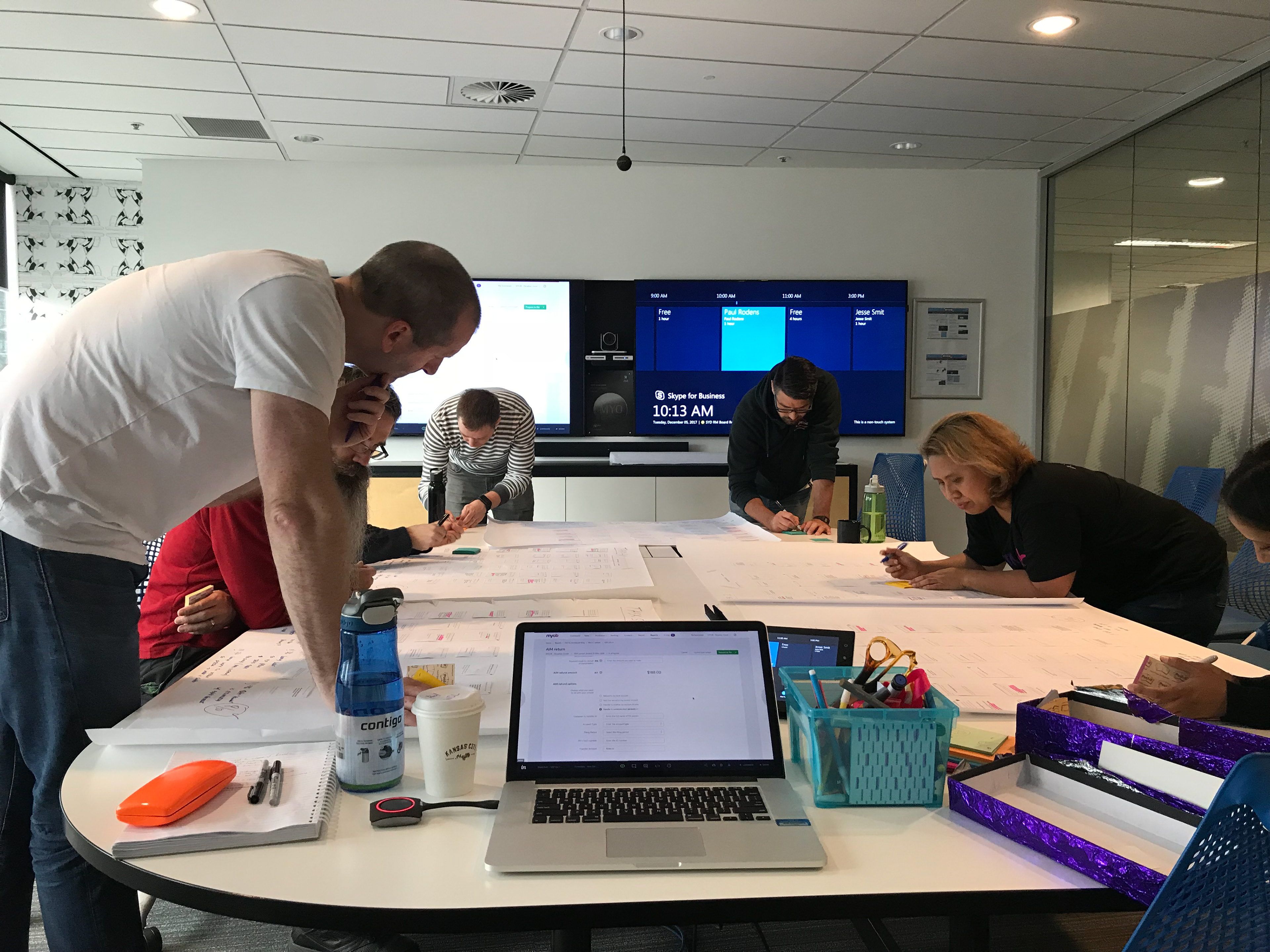
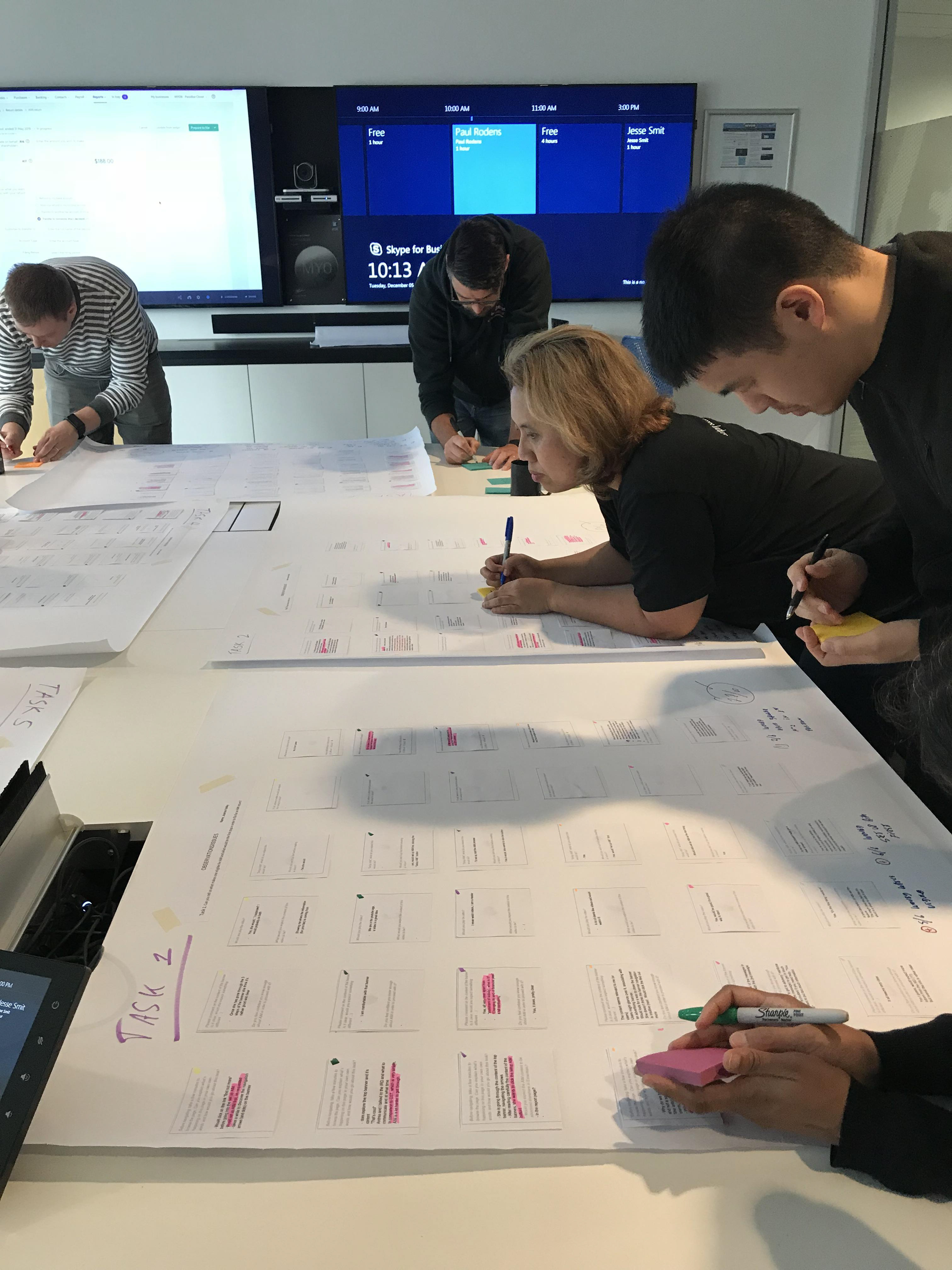
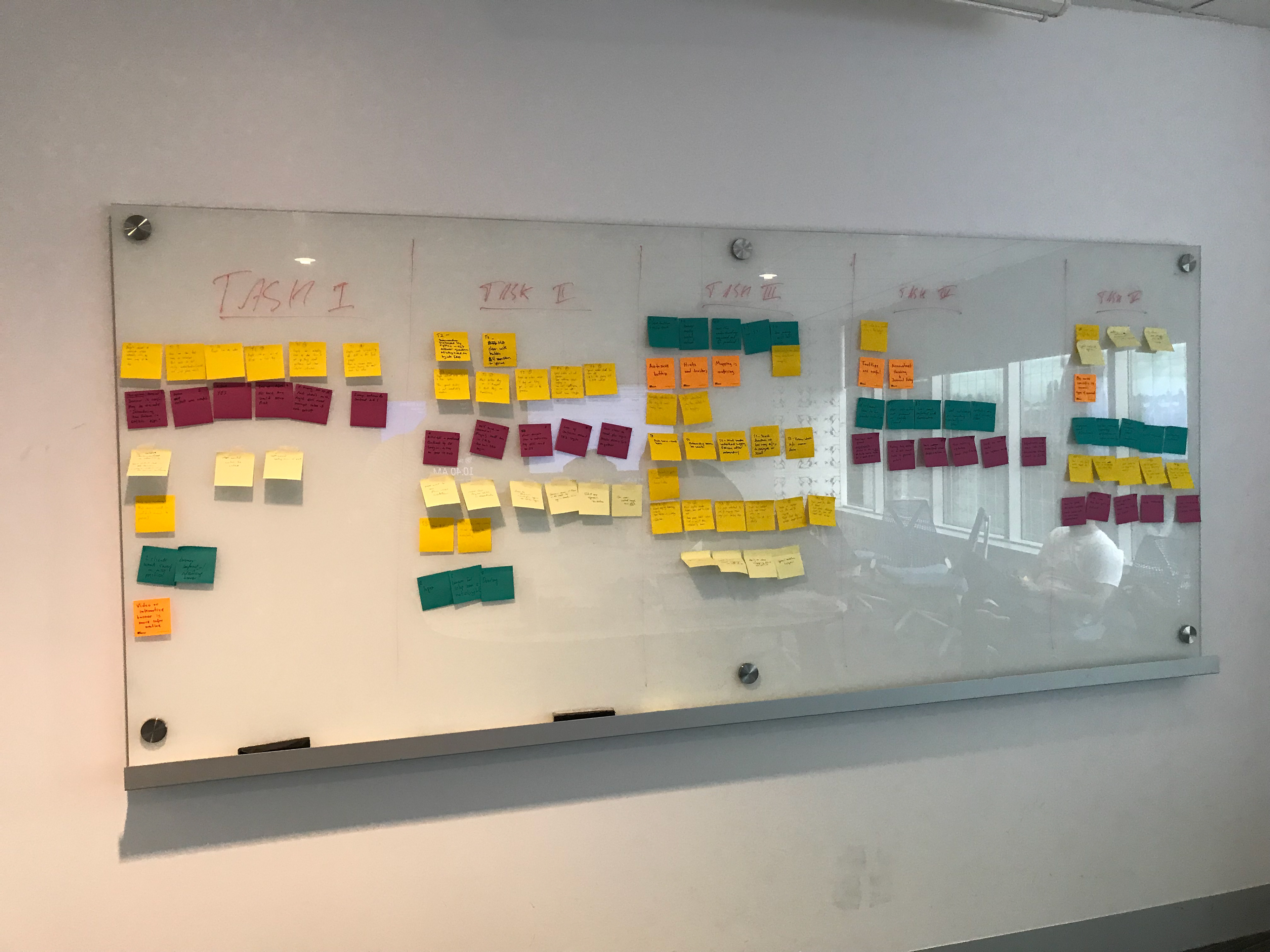
4. Deliver - deploy & monitor
Design delivery
This delivery covered the full ‘end to end’ workflow, examining how the user creates their first AIM return (including the account mapping and the different login steps)
Extra screens have been delivered for specific purposes; e.g. error messages, different states
A supporting video to showcase how the account mapping needs to be done has been produced as well.
Links:
Interactive prototype
Copy deck
• In order to avoid constantly having to update the creatives with the most recent copy, I worked with the tech writers on a live copy deck document that the developers and QAs could always refer back to
Extra screens have been delivered for specific purposes; e.g. error messages, different states
A supporting video to showcase how the account mapping needs to be done has been produced as well.
Links:
Interactive prototype
Copy deck
• In order to avoid constantly having to update the creatives with the most recent copy, I worked with the tech writers on a live copy deck document that the developers and QAs could always refer back to
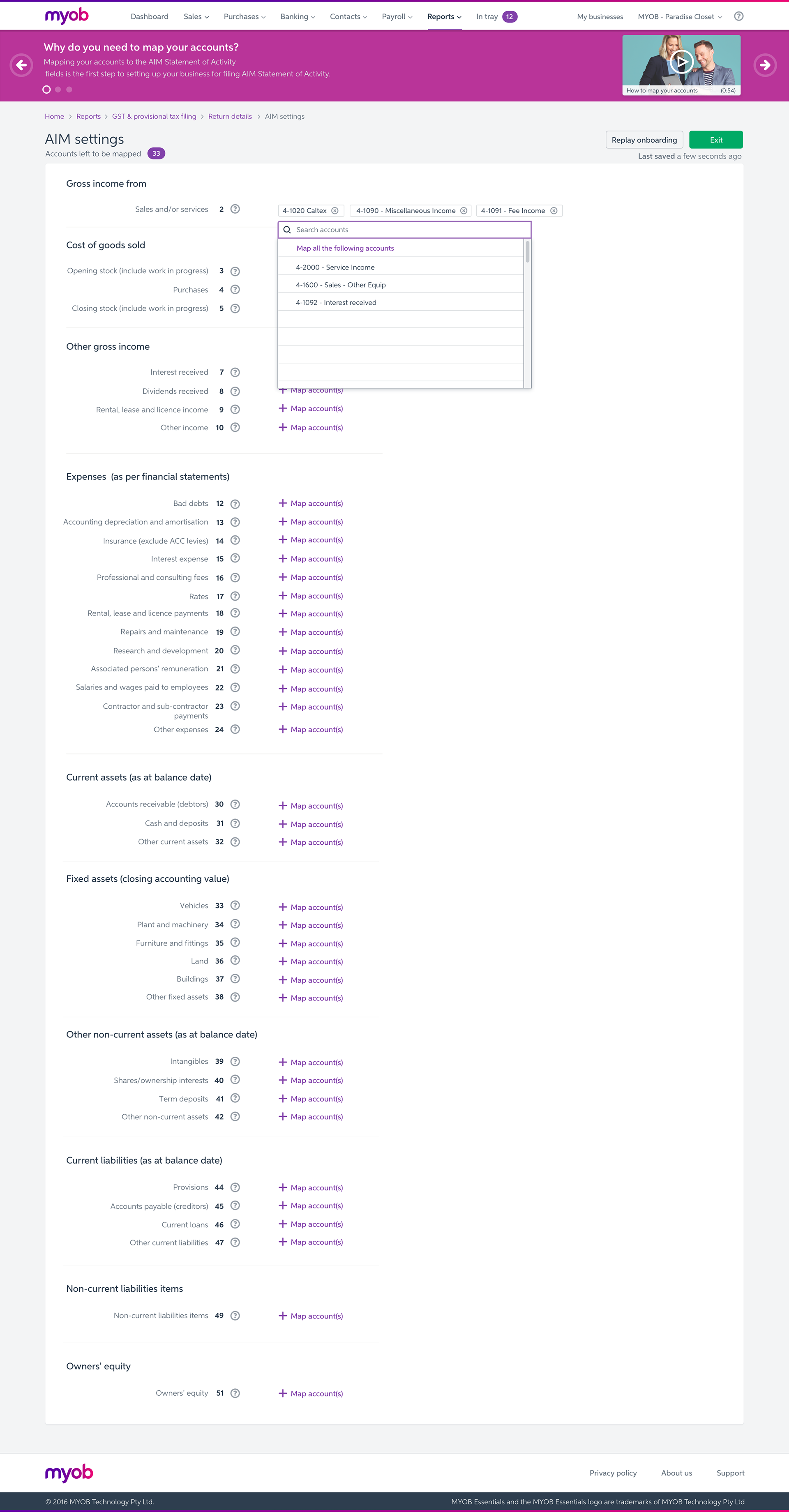
Account mapping
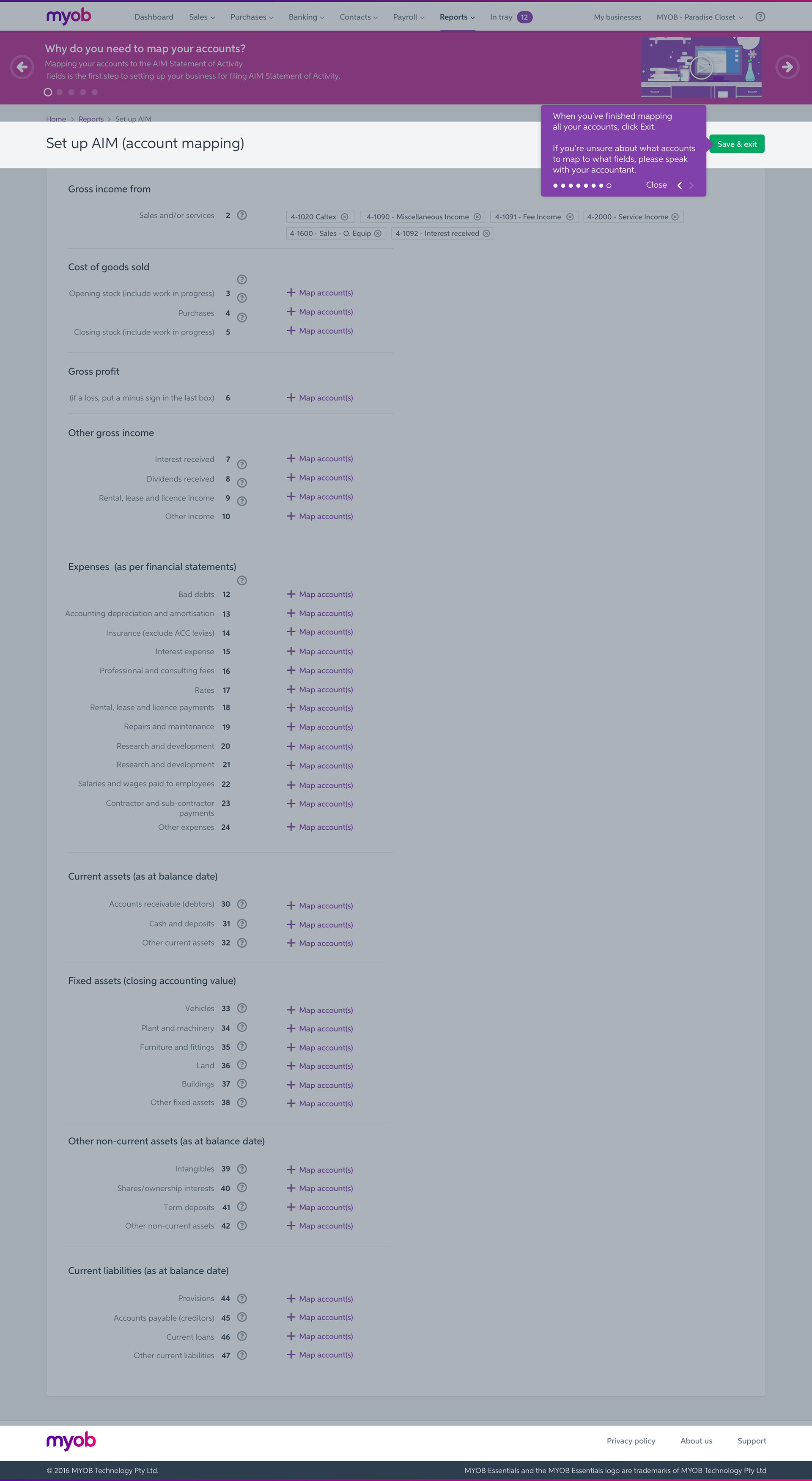
Onboarding animation

Lodgments dashboard
Presentation deck
• That was presented to all relevant teams within MYOB
Link to the presentation
• That was presented to all relevant teams within MYOB
Link to the presentation
Pilot release
• Once released we ran another 6 interviews with users who volunteered to the pilot release of this product and discussed a couple of aspects that we wanted to investigate further
• Once released we ran another 6 interviews with users who volunteered to the pilot release of this product and discussed a couple of aspects that we wanted to investigate further
Conclusions & learnings
• This was a rather long and challenging project.
The complete scope wasn’t clearly defined by the IRD and MYOB was considered as the ‘test’ provided for this tax compliance product
• From a design perspective, a long time passed between the end of this project and it’s actual implementation.
As a result, even if the team was embedded in the UX process and gained great empathy with the users, some of these learnings fell through as time went by. In many ways this was more of a waterfall project than an agile project
• Andrea (our PM at the time) was heavily involved into the entire process which made it really easy. I was not required to ‘convince’ her of the benefits of user testing. She definitely had the customer’s best interests at heart
• Including the team throughout every stage of this process was crucial. Even if some time passed between the end of the UX process and the heart of the development phase it was hugely valuable for everyone
The complete scope wasn’t clearly defined by the IRD and MYOB was considered as the ‘test’ provided for this tax compliance product
• From a design perspective, a long time passed between the end of this project and it’s actual implementation.
As a result, even if the team was embedded in the UX process and gained great empathy with the users, some of these learnings fell through as time went by. In many ways this was more of a waterfall project than an agile project
• Andrea (our PM at the time) was heavily involved into the entire process which made it really easy. I was not required to ‘convince’ her of the benefits of user testing. She definitely had the customer’s best interests at heart
• Including the team throughout every stage of this process was crucial. Even if some time passed between the end of the UX process and the heart of the development phase it was hugely valuable for everyone
